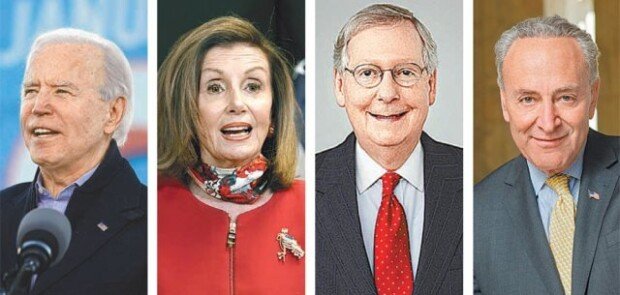Gerontocracy, the shade of young America
Gerontocracy, the shade of young America
Posted January. 06, 2021 07:41,
Updated January. 06, 2021 07:41


The U.S. is a young country. The median age of 330 million people in the U.S. is 38.1 based on the CIA World Factbook, which makes the country the youngest among advanced countries. The relative youth of the U.S. is even more prominent when compared to other countries such as Japan (47.3), Germany (47.1), Italy (44.4), Canada (42.2), South Korea (41.8) and France (41.4).
But politicians in the country are not so young. The average age of the 117th senate newly opened on Sunday is 64, the house 58. The numbers were 53 and 49 in the 97th congress in 1981, which means the congress got 10 years older in just 40 years.
Let us look at the party leaders. House Speaker Nancy Pelosi, Senate Majority Leader Mitch McConnell and Senate Minority Leader Chuck Schumer are all in their 70s or 80s. And the country is about to have the oldest president in history in the age of 79. That is why “gerontocracy,” a term that refers to a political regime in which the older generation dominates society at large and maintains their vested rights, frequently makes headline news in the U.S. Liberal media outlets such as The New Republic even criticized that the U.S. was fetishizing elderly elites.
The phenomenon is not limited to the U.S. The inevitable social shifts coming from aging society and prolonged life expectancy should not be ruled out. But the problem is that the good old “senior politics,” which passes on knowledge and expertise to the next generation, protects the rights and resolve the poverty of the elderly is vanishing, when the agenda of few powerful seniors are overrepresented. The older generation that became the ‘dragon’ by working up the social ladder long time ago are directly and indirectly involved in taking away the very ladder for the younger generation.
According to the Pew Research Center, half of the generation Z (born between 1997 and 2012) and 40 percent of the millennials (born between 1981 and 1996) said they lost their job or had a salary cut due to COVID-19 last year. It makes a sharp contrast with the baby boomers (born between 1946 and 1964) as only 25 percent of them lost a job or suffered a salary cut. Yet, it is hard to find a prominent senior politician who comes up with a solution for youth unemployment.
The power structure revolving around the older generation often leads to conflicts between generations, increased polarization and weaker national competitiveness. The number of millennials stood at 72.12 million in the U.S. in 2020, which was bigger than that of baby boomers (69.56 million), but the latter holds the economic power as well. Currently, the average age of S&P 500 CEOs is 58, which is 15 years older than 2006. Workers over 55, which accounted for 15 percent of the working population in the U.S., increased to 30 percent. Italy’s highest national debt, youth unemployment rate, and fastest decrease on individual income among advanced countries in West Europe and even the fall of the Soviet Union, which had ruled the world along with the U.S., are the result of old leaders in the 2000s and the 1980s, many analysts say.
Canada’s Prime Minister Justin Trudeau who took office at the age of 44 in 2015 had a cabinet with an equal number of men and women and said, “Because it’s 2015.” His argument that changing old society is the most urgent task is still valid now and for many countries in the world.
Jung-Min Ha dew@donga.com







